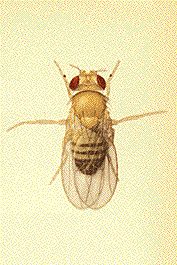The units of selection - Does a gene ever benefit at the expense of an allele?

Segregation distortion
A segregation distortion gene produces a distortion in normal Mendelian segregation, so that chromosomes bearing this gene are over-represented in an organism's offspring. The system could work as follows:
Two tightly linked loci mainly control the process:
• a recognition locus
• a distortion locus
The recognition locus has a particular recognition sequence, and the distorter allele produces a protein that binds to the recognition locus. If it is a 'distorter' recognition sequence, there is no effect. If it binds to any other recognition sequence, it prevents the chromosome from entering sperm. This produces a distortion in favor of chromosomes containing the segregation distortion gene. Female heterozygotes have normal Mendelian segregation.
The segregation distorter gene was first found in Drosophila stocks from Wisconsin and Baja California. Perhaps more than 90% of offspring from male heterozygotes have the segregation distorter gene because the sperm containing other genes fail to develop. This is a great selective advantage. Any allele that gets into more than half of a heterozygote's offspring will automatically increase in frequency and should spread through the population.
| Next |



